Armenian Refugees to Romania
The first major genocide of the century was perpetrated by the Ottoman Empire against the Armenians.

Steliu Lambru, 07.09.2015, 12:00
The 20th Century is known, among other things, as being the century of genocide. The first major genocide of the century was that perpetrated by the Ottoman Empire against the Armenians on its territory. As many as 1.5 million Armenians perished, about half of the total population. The official motivation of the Ottoman authorities was the fact that the Armenians had fraternized with the Russian army. In reality, however, the reasons were political, such as nationalism and the pan-Turanic ideology, economic – Greeks and Armenians held sway over trade and banking in the Ottoman Empire – as well as religious. It all started with men being seized and taken to work on roads and railroads, and there they were beaten and starved to death. On April 24, 1915, Talaat Pasha, Grand Vizier and Minister of Communications, issued an order for whole families to be deported.
The luckiest of them managed to save themselves, some of them by finding their way to Romania, as we were told by historian Eduard Antonian. He told us that the history of Armenian refugees in Romania started in late 19th Century, after the genocide of 1895-1896:
Eduard Antonian: “As many as 350,000 Armenians were massacred under the orders of Abdulhamid II, also known as the Red Sultan. As a result, a good part of the Armenian community in the Ottoman Empire took refuge in Romania. To this day, about 10% of the Armenian community in Romania are descendants of the people who came here after the first genocide. The first refugees were still fairly well off, and they could leave the Ottoman Empire with some savings. Which is why they opened stores here, went on with their lives, and integrated perfectly in Romanian society.
We asked Eduard Antonian how the people who got to Romania managed to escape:
Eduard Antonian: “Those hapless people were helped even by the Arab and Turkish population, civilians. Some of them were just lucky. Many managed to bribe their way through the Ottoman bureaucracy, many got lucky thanks to foreign missions, because the US got heavily involved in the matter. They had a well organized embassy, and Ambassador Henry Morgenthau, who later wrote his memoirs, in which he denounced the crimes perpetrated against Armenians, got involved in helping Armenians. There were also Danish and German Protestant missionaries who helped the people who got away.
By historical estimates, around 20,000 Armenian refugees, about a quarter of which were orphaned, found shelter in Romania and were helped out by the fellow Armenians who were already living here. They came in several waves, mostly after the war was over. Eduard Antonian reconstructed the route taken by those who, for an entire century, were trying to escape a world of death and destruction:
Eduard Antonian: “In Istanbul, as it happened with my grandfather and his children, they took a French boat and went to Constanta. The boat carried a few thousand orphans from the genocide. In Romania there was a well organised Armenian community, and a wealthy one. There were major figures of their time among them, such as Krikor Zambaccian, Grigore Trancu-Iasi, the Manisarian brothers, the biggest grain wholesalers in south-east Europe. The Union of Armenians was set up in 1919 for the specific purpose of helping the refugees, and its first president was Grigore Trancu-Iasi. When the refugees reached Constanta, the public was horrified. The newspaper Adevarul in 1915 had correspondents in Istanbul, who sent in reports on the genocide. The Romanian public opinion was already aware of what was happening to the Armenians in the Ottoman Empire. Armenad Manisarian, the second president of the Union of Armenians, went to Prime Minister Bratianu and asked what was to be done with the Armenian refugees. Bratianu asked him if he vouched for the refugees from all points of view. And Manisarian said yes. They got official approval, and all the refugees settled here, and later got citizenship. Refugees came here with the so-called Nansen passports, which were granted to stateless people, and were valid only one way. When the orphans got here, the Armenian community mobilized and bought several hectares in Strunga, near Iasi. They built an orphanage there, with a school and teaching staff, and this is where the orphans grew up. They learned trades and built a life for themselves, and many were adopted by Armenian families. Many of them opened shops, like my grand-grandfather, who opened a cobbler shop in Bucharest.
In time, the trauma of war faded, but was never forgotten. Eduard Antonian told us that the Armenian refugees lived constantly between shocking memories and hope:
Eduard Antonian: “The Armenian refugees from the Ottoman Empire never ceased to consider themselves anything other than Ottoman citizens, they were good citizens, they paid their taxes, took up military service, they spoke Turkish. The people of the community whose parents escaped genocide said that the latter spoke Turkish whenever they didnt want the children to know what they were saying. To this day, a few of the elders in the community still speak it. Unfortunately, in 1945 a part of them, hoodwinked by Soviet propaganda, repatriated to Armenia. They were told that they now had their own country. In 1991, when Armenia declared its independence, some of the children of those who went to Armenia with the Red Army came back to Romania.






























